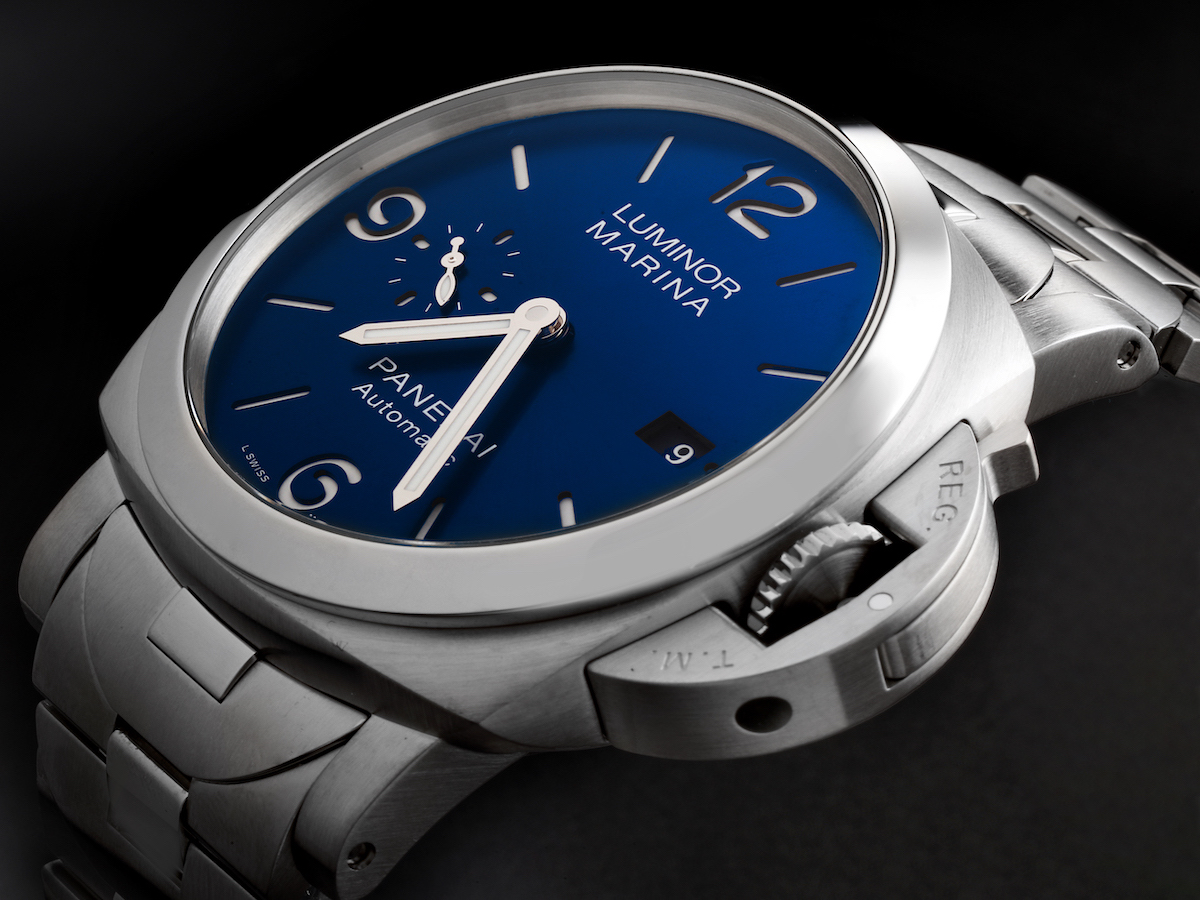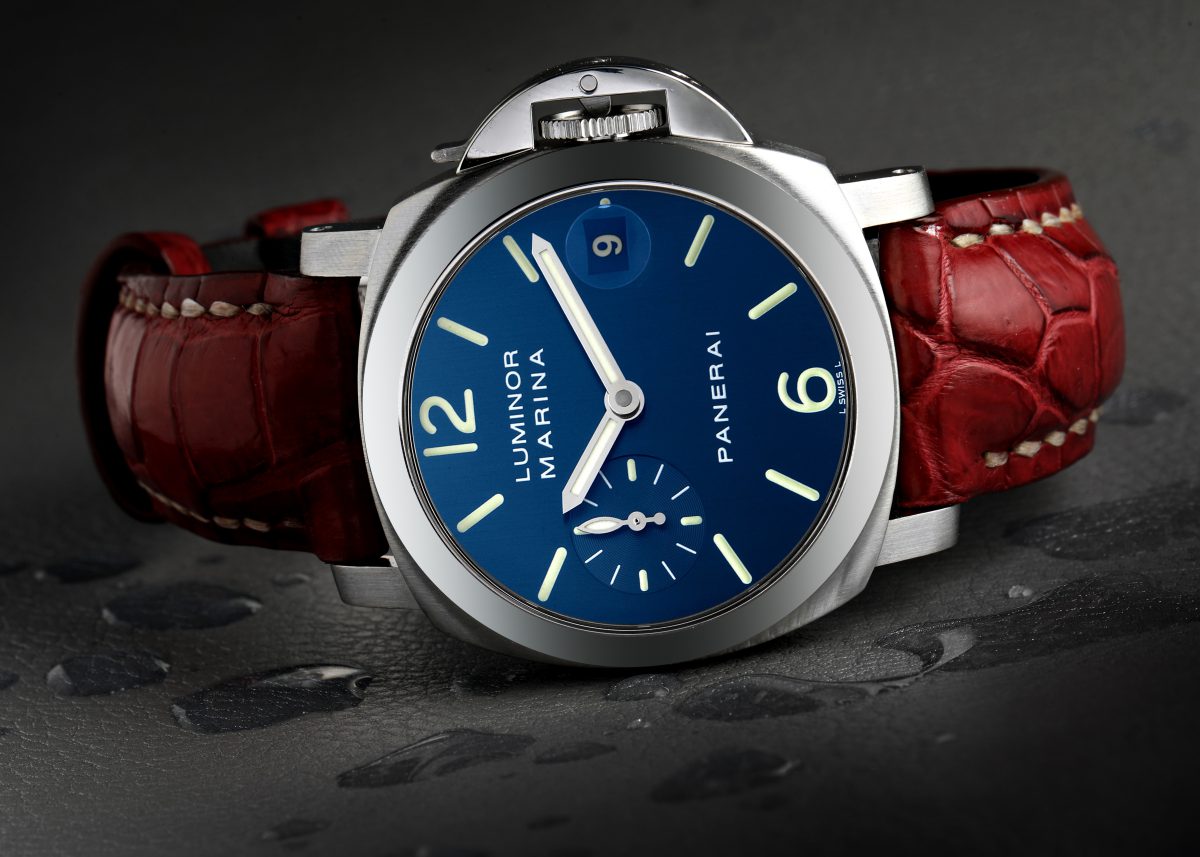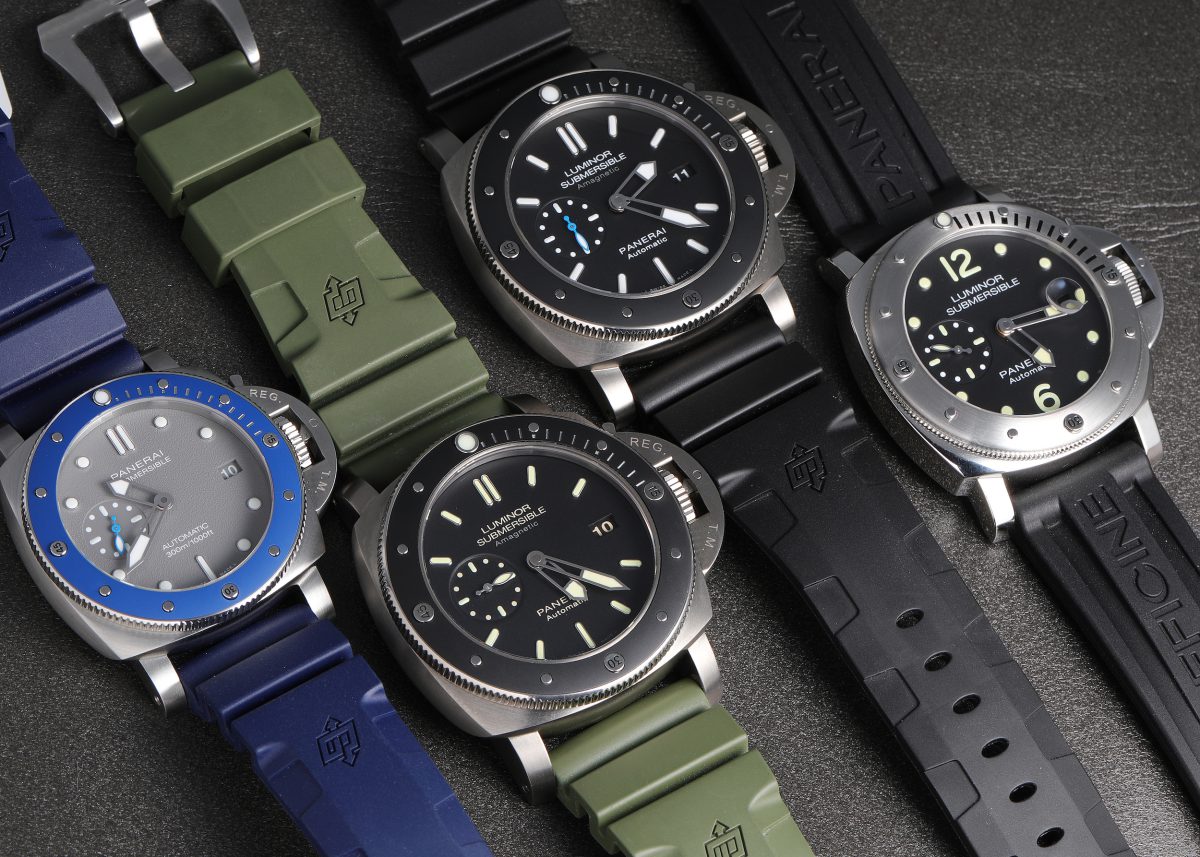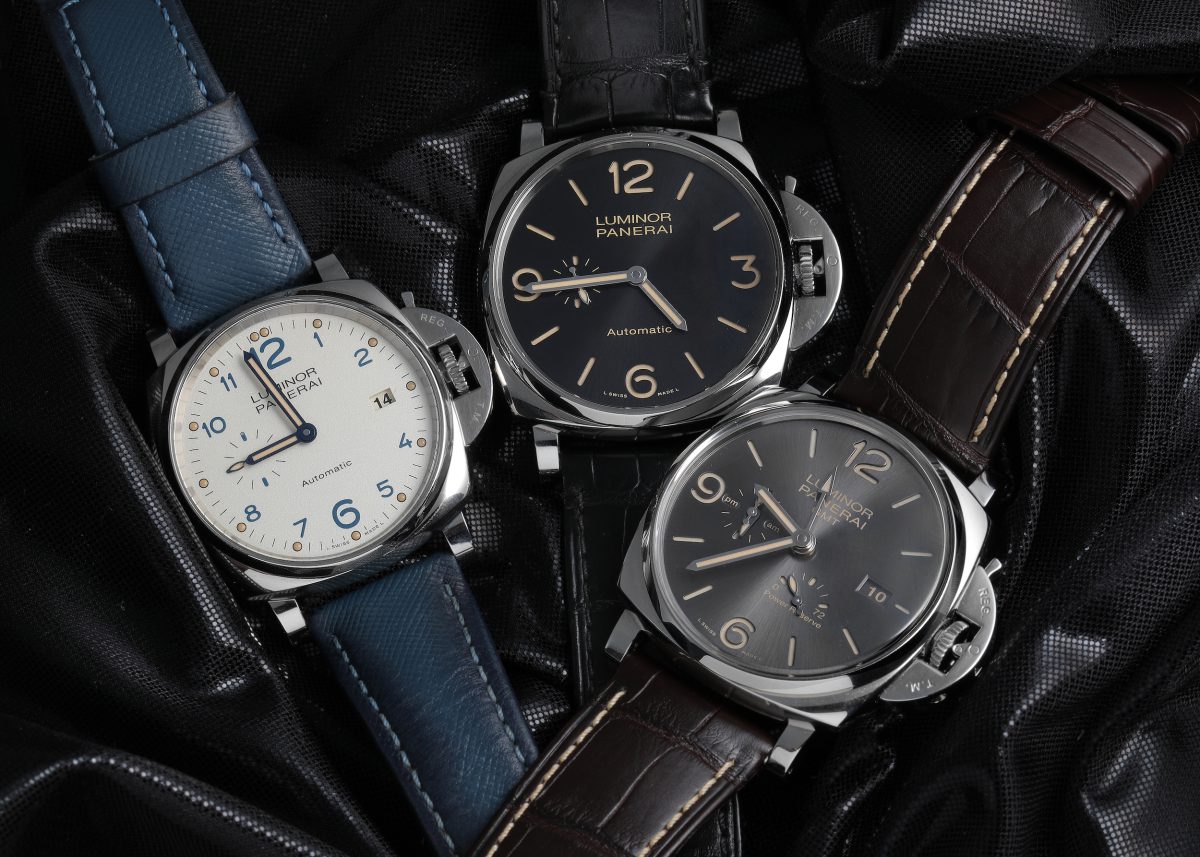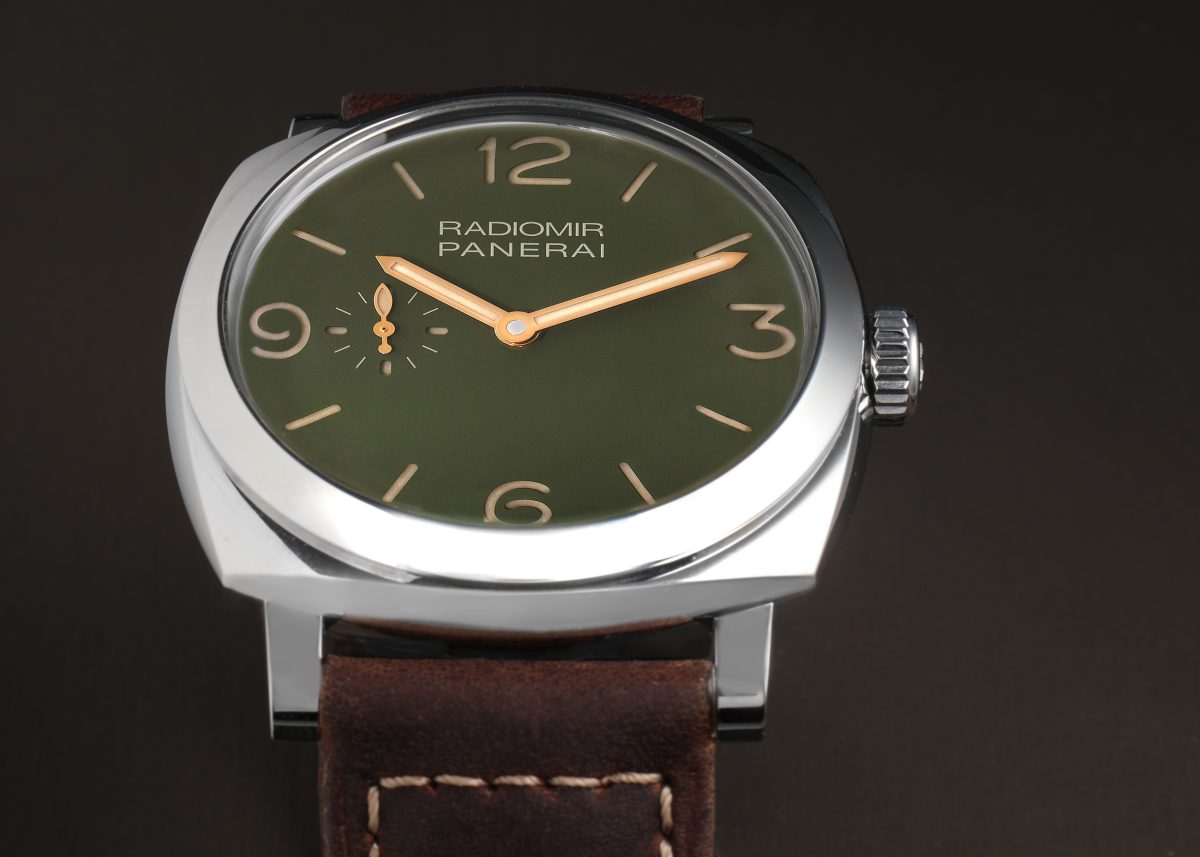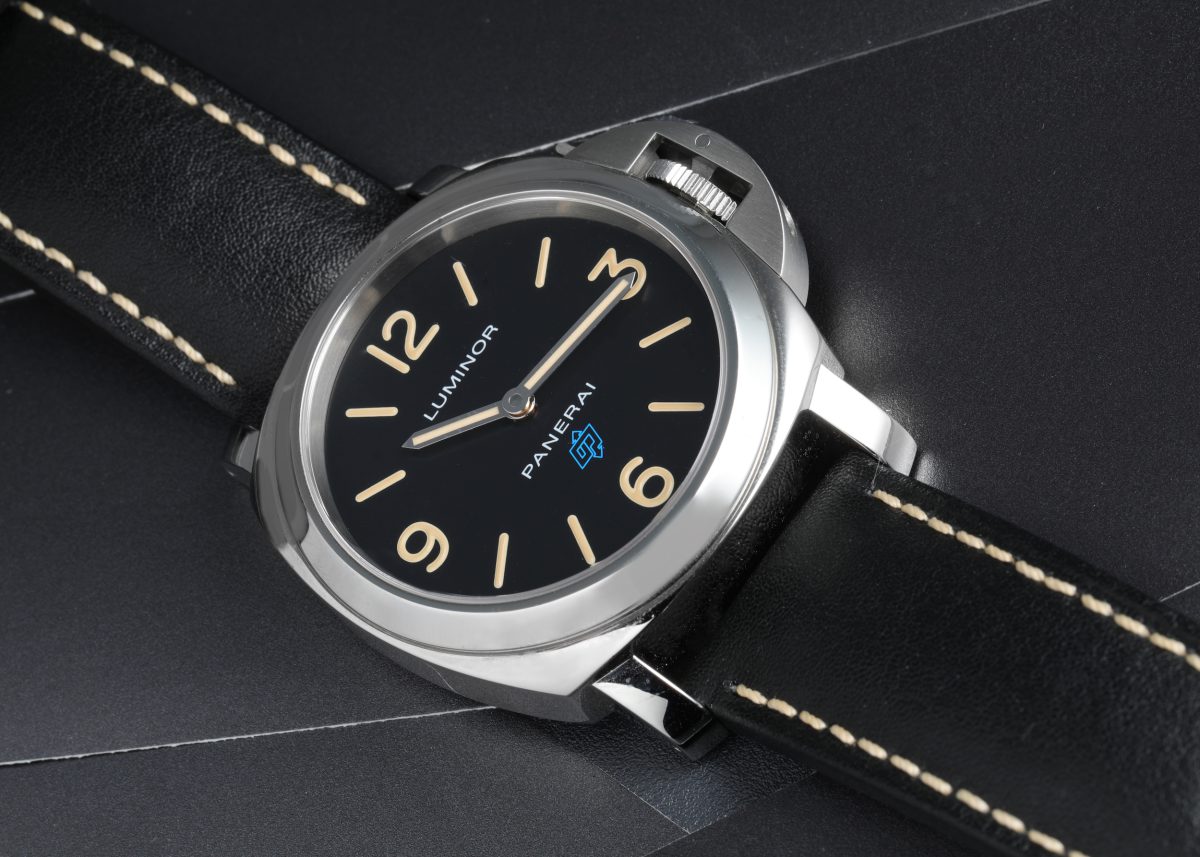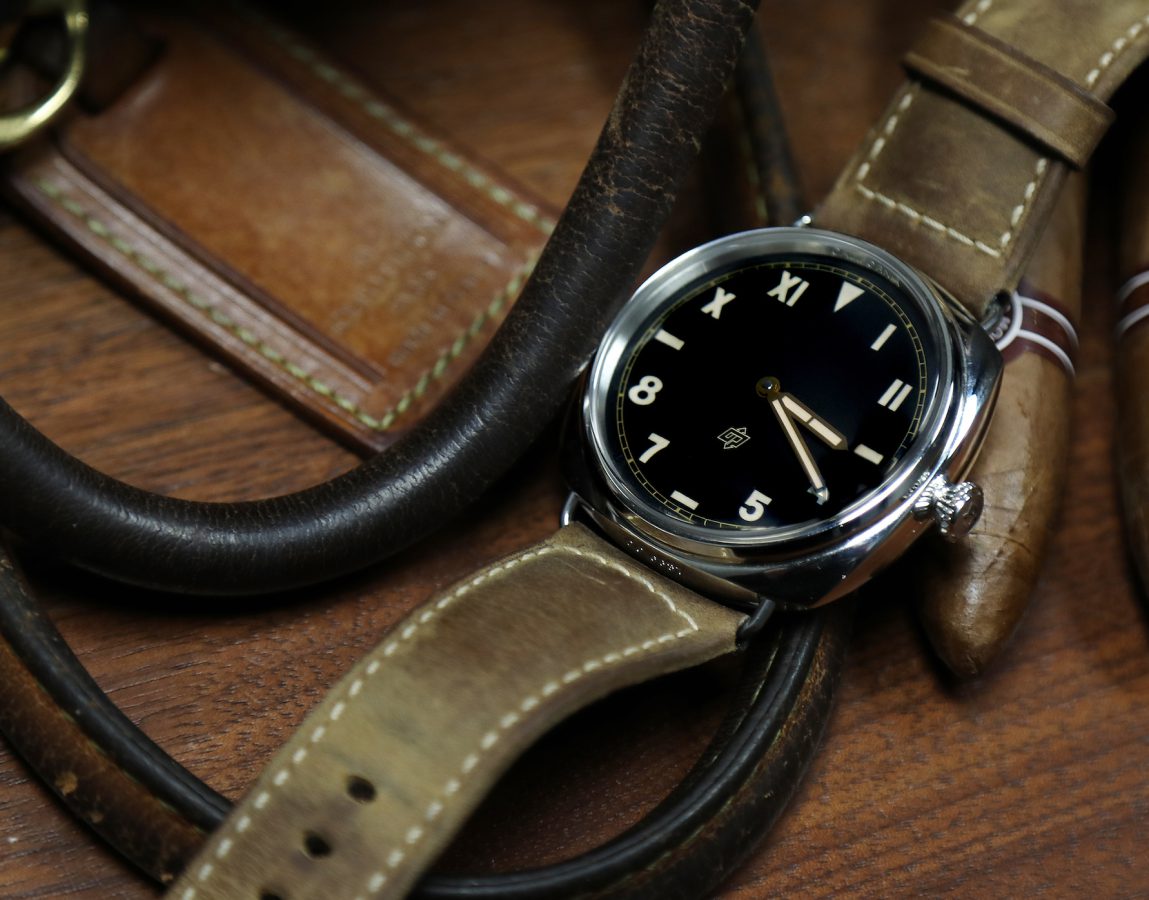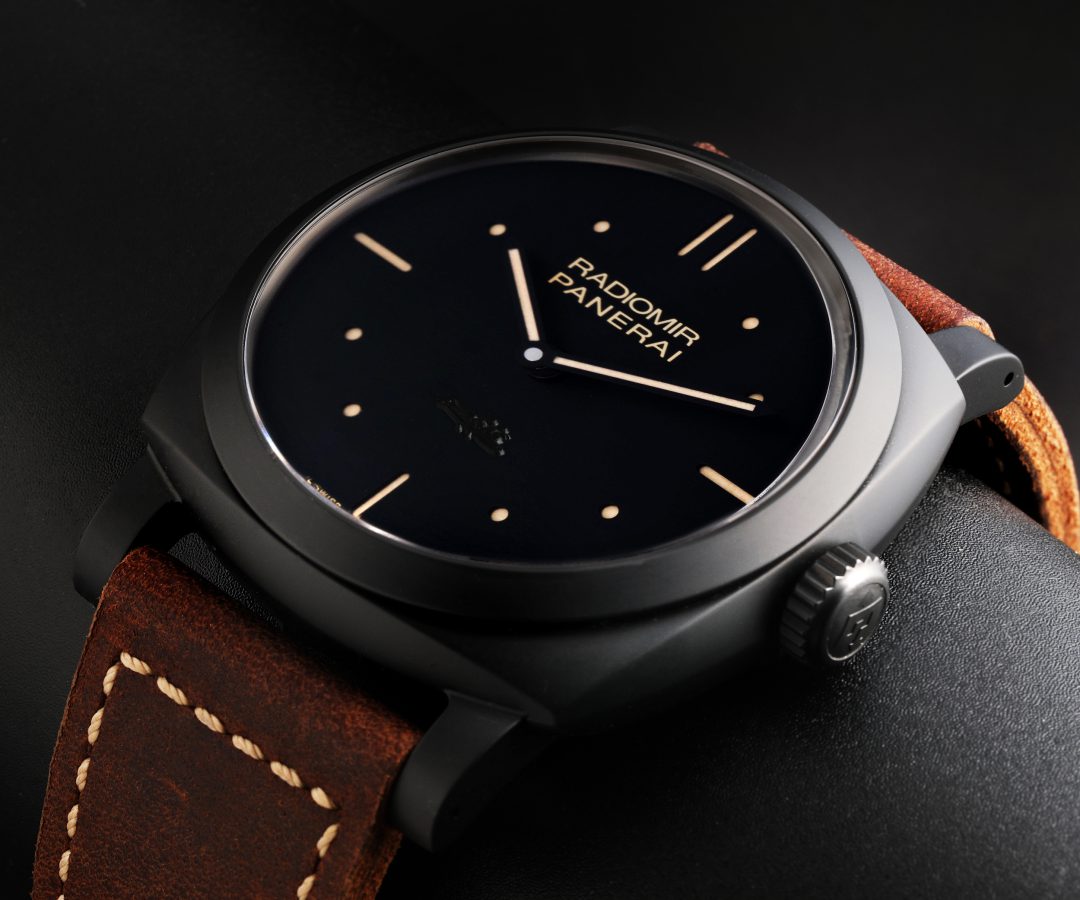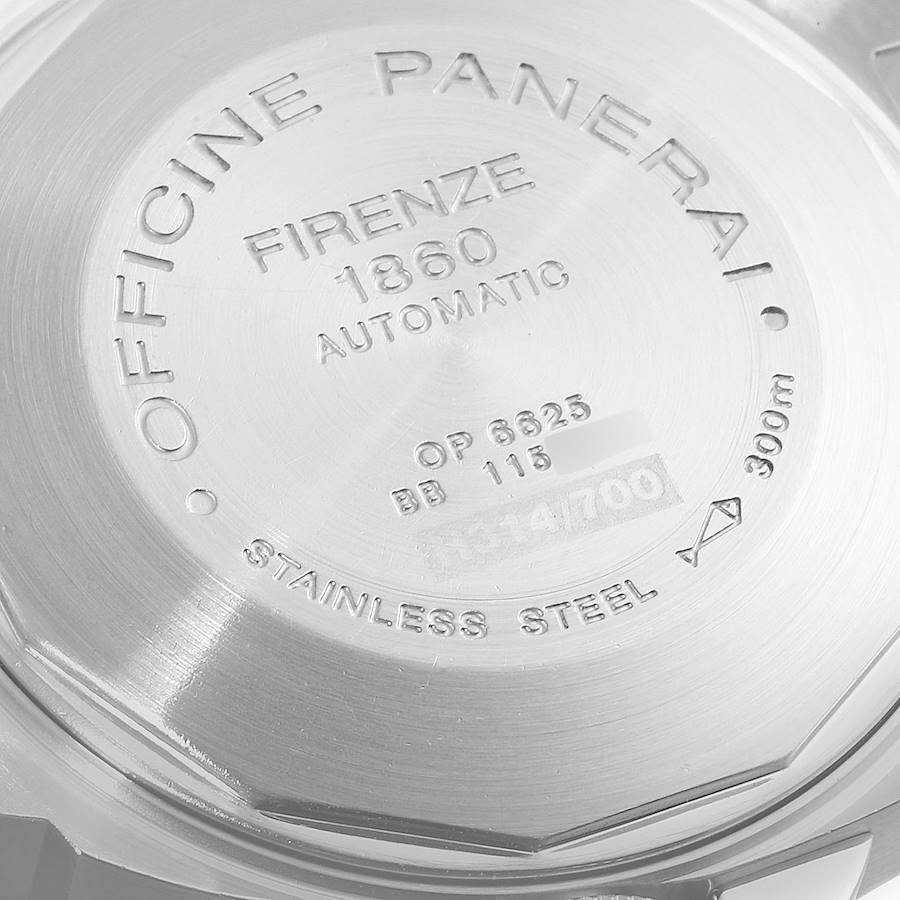Massive, robust, and often with a can’t be missed half-moon shaped crown, Panerai is best known today as the action hero’s choice timepiece. From Sylvester Stallone and Dwayne Johnson, almost every on-screen alpha-male has worn a Panerai when saving the day.
Those who witnessed the rapid popularity of Panerai in the 2000s would say that the brand was an overnight success, but the truth is that it traces its roots to the 19th century, as a supplier of precision timepieces for the Italian Navy. Just as large watches were becoming more popular on the cusp of the 21st century, Panerai was finally made available to the public, and found its moment on the wrist of the most celebrated action stars of the 1990s.
Unapologetically masculine and militaristic, and yet opulent at the same time, no watch straddles the line between tool and luxury watch like Panerai does.
In the market for a Panerai watch? Learn the basics of the brand with SwissWatchExpo’s Ultimate Guide:
The History of Panerai Watches
Panerai’s story begins in 1860, when watchmaker Giovanni Panerai opened shop in Ponte Alle Grazie in Florence. With the help of his son Leon Franceso, not only did Panerai become the city’s first retailer of Swiss watches, they also established its first watchmaking school.
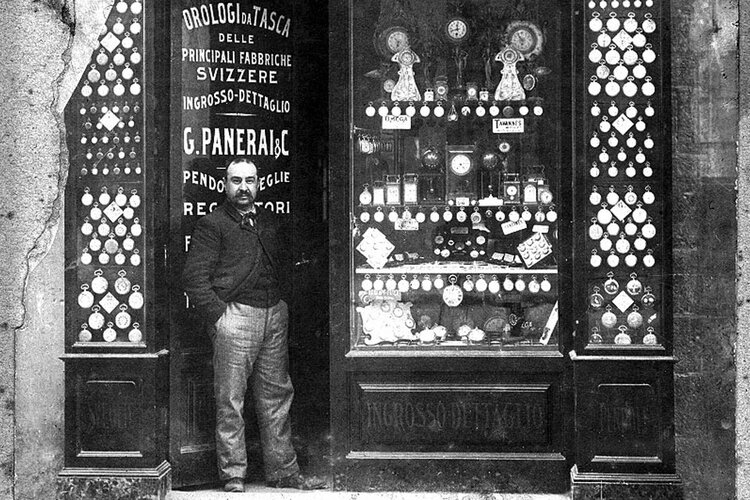
Giovanni’s grandson Guido took over the business in the 1910s, and also acquired his wife’s family business – a manufacturer of tools and hardware for the military. By then, Guido essentially had two companies: Orologerie Svizzera, the original shop they had set up, which by this time sells prestigious Swiss watch brands like Rolex, Patek Philippe and Vacheron Constantin; and Guido Panerai & Figlio, a supplier of precision instruments and diving equipment to the Royal Italian Navy.
After decades of supplying materials such as naval combat sights to the Royal Italian Navy, they came up with a special request – to make the dials of their instruments brighter and more legible. In collaboration with Lieutenant Commander Carlo Ronconi, Panerai developed a radium-based powder for use on the dial markers.
The use of highly self-luminescent radium paste was a key element of this material. On March 23, 1916, Panerai filed a patent for the Radiomir, which was first of the many that the brand would file over its history.
In 1935, during the impending Second World War, the Royal Italian Navy assembled an elite team of commandos who would operate underwater to conduct sabotage missions against the British Navy. This time, they needed a timepiece that offered both legibility in the murky waters, and resistance against underwater elements. The Naval Command turned to Panerai once more for a solution.
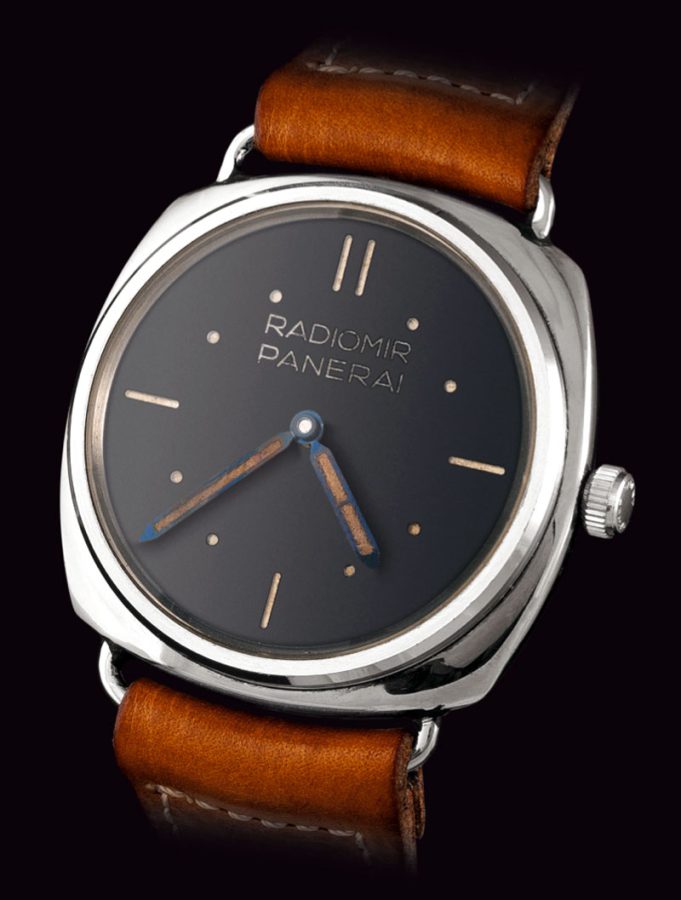
The result was Panerai’s first wristwatch, the now iconic Radiomir. It took its name from the signature groundbreaking luminescence earlier developed by the company. The first reference 2533 featured a two-layered sandwich dial and a Swiss Cortébert 618 Caliber supplied by Rolex and modified by Panerai.
While the Panerai Radiomir did deliver on robustness and legibility, it had issues to be resolved. First was that its winding crowns sacrificed the water resistance of its cushion-shaped case; second was that the radium-based Radiomir lume was discovered to emit levels of radioactivity that were unsafe for humans.
Panerai dealt with these issues and introduced a new timepiece called the Luminor. The first solution came in 1949, when they developed Luminor, a less toxic luminescence with lower radiation emissions – the result of many studies and experiments.
The second solution came in the 1950s when the brand developed what is now known as their signature design element – a crown protecting bridge that locks the screw-down crown securely into the case, thus providing a greater level of water resistance.
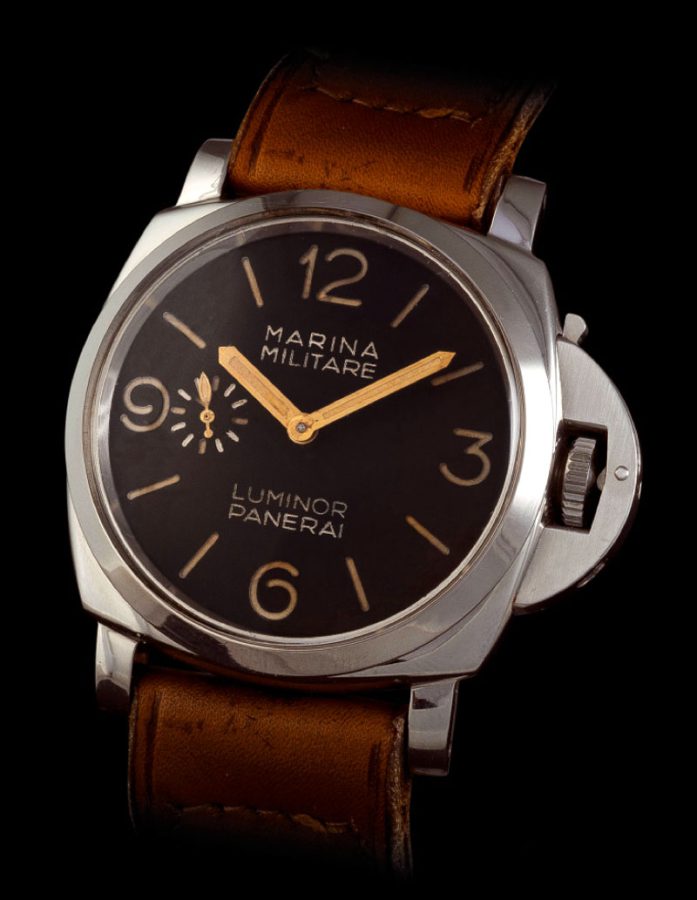
Panerai had the foresight to patent this bridge in 1956, so while it could have become a ubiquitous feature of dive watches like the unidirectional bezel, the brand is still the only watchmaker that can use it in their designs.
In the same decade, Panerai had become a supplier of diving watches to several maritime military units outside of Italy, including the Egyptian Navy. In 1953, the latter commissioned a timepiece from Panerai, which would result in the Egiziano watch. The reference GPF-2/56, also known in its earlier days as the “Egyptian”, introduced a number of innovations: an imposing 60mm case, a graduated rotating bezel to help the wearer calculate diving time, and the Angelus caliber with an 8-day power reserve.
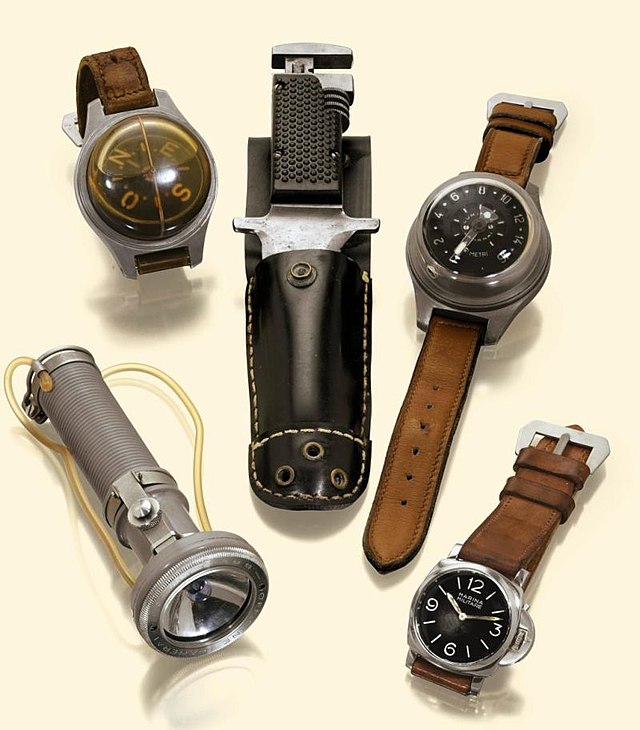
The “Egiziano” would become the inspiration for the Submersible line, the only collection of Panerai thus far that has the rotating diving bezel.
Panerai soon ended its contract with Rolex, and while it remained a supplier of watches to the Italian Navy for the next two decades, it would go into a slow decline, culminated by the death of Guido’s son Giuseppe in 1972.
Former Italian Navy officer Dino Zei was nominated to be the new CEO of the company, and it changes name from G. Panerai &Figlio to Officine Panerai Srl. Zei recognized the opportunity for mechanical watches’ renaissance after the Quartz Crisis of the 1970s. After many decades of making watches and instruments almost exclusively for militaries, Officine Panerai launched their first commercial watches in 1993.
This first collection included a Luminor, Luminor Marina, and a Mare Nostrum. The first two established the 44mm cushion-shaped case with the patented crown-protecting bridge. Meanwhile, the Mare Nostrum had a massive round case and crown pushers, that while also distinct, has not been a focus of the brand.
At the time, the preference for large, military-style pieces has yet to emerge, but there were seeds of interest in bigger case sizes. Fortunately, one of the catalysts for this trend had his eyes on a Panerai.

In 1995, Hollywood action star Sylvester Stallone was filming a movie in Rome and chanced upon a Panerai in one of the stores. He loved the robust, utilitarian look so much that he ordered another 200 pieces from Panerai and had his signature engraved on the case back, which he handed out as presents to the cast and crew of the film. Sly also famously wore a Panerai Luminor Marina in his film Daylight the following year, putting the brand on the radar of watch collectors worldwide.
His friend Arnold Schwarzenegger, also one of the biggest action stars of the 1990s, took a liking to Panerai watches and wore one in 1996’s Eraser. From then on, Panerai has become the quintessential masculine and robust timepiece.
Panerai’s journey from military tool watch to luxury watch came full circle when the company was acquired by the Richemont group (then named Vendôme) in 1997, joining their roster of heritage luxury brands which included Vacheron Costantin, Cartier, and Jaeger-LeCoultre.
Today, Panerai continues to dominate the market for large tool watches, and sits at the forefront of innovation in watchmaking materials.
Panerai’s Model Categories
Today’s Panerai catalog can be categorized into four families of watches: Radiomir, Luminor, Luminor Due, and the Submersible line.
Radiomir
The Radiomir collection references Panerai’s earliest military watches from the 1930s, which were christened after the luminous material of the same name. The watches are characterized by a cushion-shaped case without the prominent crown guard and locking mechanism. In its place is either an onion-shaped crown (for the Radiomir edition) or a conical crown (for the Radiomir 1940 edition).
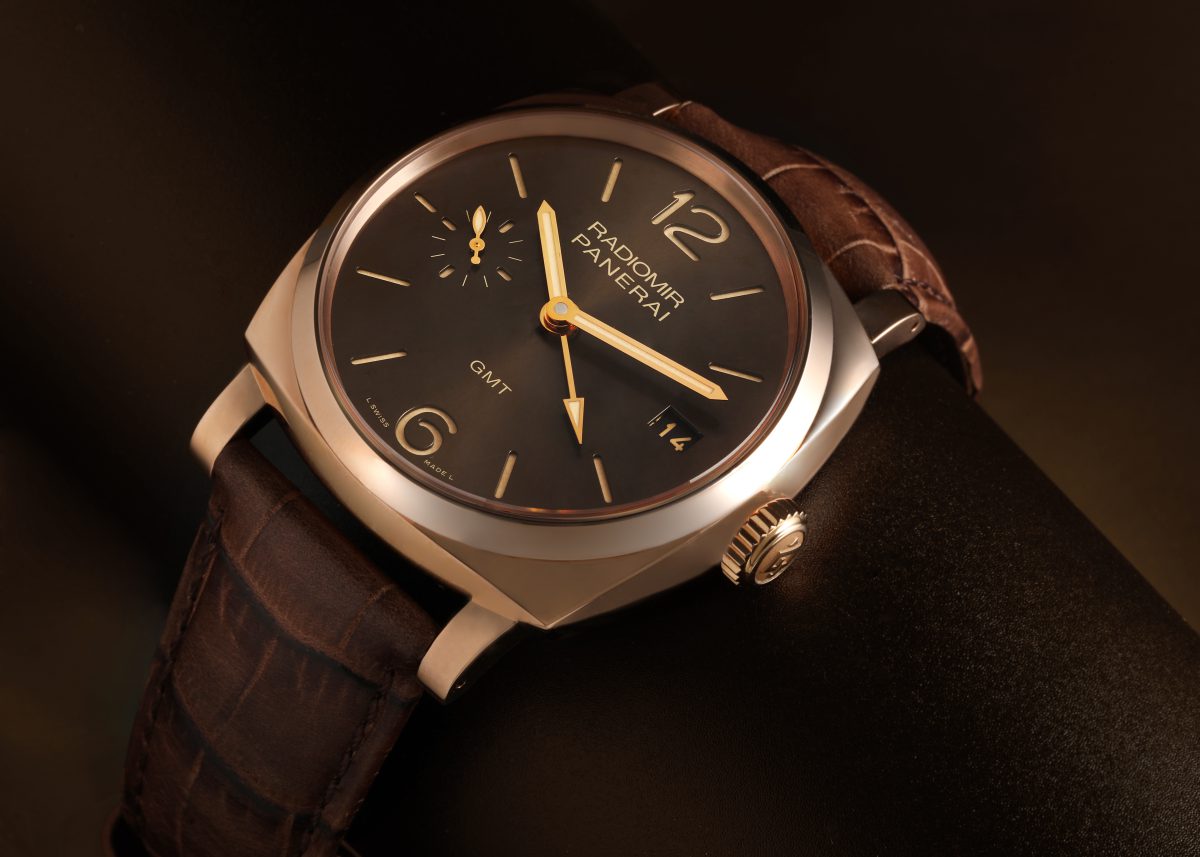 Panerai Radiomir 1940 3 Days GMT Oro Rosso 18k Rose Gold Watch PAM00570
Panerai Radiomir 1940 3 Days GMT Oro Rosso 18k Rose Gold Watch PAM00570
These two versions of the Radiomir also differ in their type of lugs – the Radiomir has thin, wire lugs that can be detached to aid strap changes, while the Radiomir 1940 has lugs and spring bars that are integrated with the case.
The omission of the huge crown gives Radiomir watches a retro and dressier look compared to the rest of the collection, but it has been enlarged to suit modern tastes.
Luminor
In the late 1940s, Panerai stopped the use of Radiomir lume and switched to the safer, tritium-based mixture they have patented as Luminor. Aside from solving the potential health risks that came with the Radiomir, it also introduced another innovation – the signature crown lock that offers superior water resistance. The crown-protecting bridge that protrudes from the case is easily Panerai’s most recognizable design element until today.
Panerai Luminor Marina Blue Dial Steel Mens Watch PAM 070
There are two types of Luminor cases – the Luminor and the Luminor 1950. They practically have the same cushion-shaped case with crown lock, but the differences will be noticeable on the case back. The Luminor has straighter edges, while the Luminor 1950 has a slightly curved case back and in most cases a domed acrylic crystal that shows the movement.
Submersible
The Submersible line was part of the Luminor collection from 1998 until 2019. Inspired by their history of creating underwater precision instruments, Panerai launched the Luminor Submersible line as a range of “true” dive watches – that is, with a rotating bezel to monitor immersion time and 300m water resistance. Today, it is a stand alone collection simply called Submersible, and stands out even further from the Panerai catalog with its skeleton hands.
Luminor Due
The Luminor Due is the youngest family of watches in the Panerai catalog. It launched in 2018 and is Panerai’s response to the call for both smaller models and watches for ladies. Due, which means “two” in Italian, is considered the second chapter for the Luminor. While it still has the familiar case design and crown guard locking mechanism, its case is polished, and it has a lower 30m water resistance. It is well-suited for those who seek a dressier Panerai.
Panerai Dial Types
As we discussed earlier, Panerai has deep roots in providing watches with outstanding legibility. Made for use by military frogmen in murky waters, their luminosity was created so high, that divers often had to cover the watch in order to not be spotted by sentinels during the war.
Today, Panerai maintains their high contrast dials, and throughout history they have offered different designs.
Baton
This type of dial was seen on the first ever Panerai wristwatch, the Radiomir ref 2533 launched in 1936. The said timepiece is historic for holorogy overall as it marks the connection between Panerai and Rolex. It was the latter’s first time to allow another company to use their movement and dial.
It is characterized by thin recessed baton markers at 3, 6, 9 and 12 o’clock, and small recessed dots for the rest of the hour markers. A tribute to this dial was introduced in 2012 with the PAM 425 and PAM 449 SLC (Siluro a Lento Corsa) watches, featuring the same minimalist design in a 47mm modernized Radiomir case.
Sandwich
This is the most common dial type that we see in Panerai watches today. The Sandwich dial is called such because of two separate discs wherein the bottom layer has luminescent material, while the top layer has recessed indices for the hour markers, allowing the luminescence to come through. In short, it is a stencil effect.
The earliest sandwich dials were composed of three layers, with the middle plate adding another layer of transparent Perspex.
Sausage
The other type of dial that we see today is called the Sausage dial. There were two ways Panerai manufactured these dials – first is that indexes were etched onto the dial and filled with protruding luminescent material; second is that the lume was painted directly onto the dial’s surface. Either way, this resulted in markers that swell on the dial, which inspired the name.
California Dial
First introduced in 1941, the California Dial features a mix of Roman and Arabic numerals. The upper part features Roman numerals for the 1, 2, 10, and 11 markers, while the lower part features Arabic numerals for the 4, 5, 7, and 8 hour markers. The four cardinal points are marked by rectangular and triangular hour markers.
This dial design is actually patented by Rolex. In 1941, Rolex filed for the patent of this very specific design, and was granted the Brevet #221643 the year after. Rolex supplied these dials to Panerai around 1944, and they were manufactured by Stern Frères – famed watch dial company and now owners of Patek Philippe.
Rolex used to advertise this dial design as their “error-proof radium dial” because of its exceptional legibility. The markers were even made slightly recessed so they can hold more radium.
It was not until the 1980s that these designs were dubbed “California Dials”, when Rolex Bubbleback watches with the “error-proof radium dials” became particularly popular in the state.
Rolex has not used the term “California Dial” in their official literature, but Panerai certainly has. The company regularly releases designs based on vintage references and have used the California Dial both in the design and official model name.
In 2006, Panerai introduced the Radiomir 1936 PAM 249 that featured a California dial. This model is limited to 1,936 pieces only and is particularly sought-after by collectors.
Waffle Dial
The Waffle Dial is commonly found in Submersible watches and are formed by repeating patterns of small squares. It is easy to understand why the dial type has been nicknamed “waffle” – the pattern simply looks very similar to a Belgian waffle. However, in official watch literature, this type of dial is called the “Paris Hobnail” or “Clous de Paris” after a type of nail used and designed in Paris which creates a similar embossed pattern of squares.
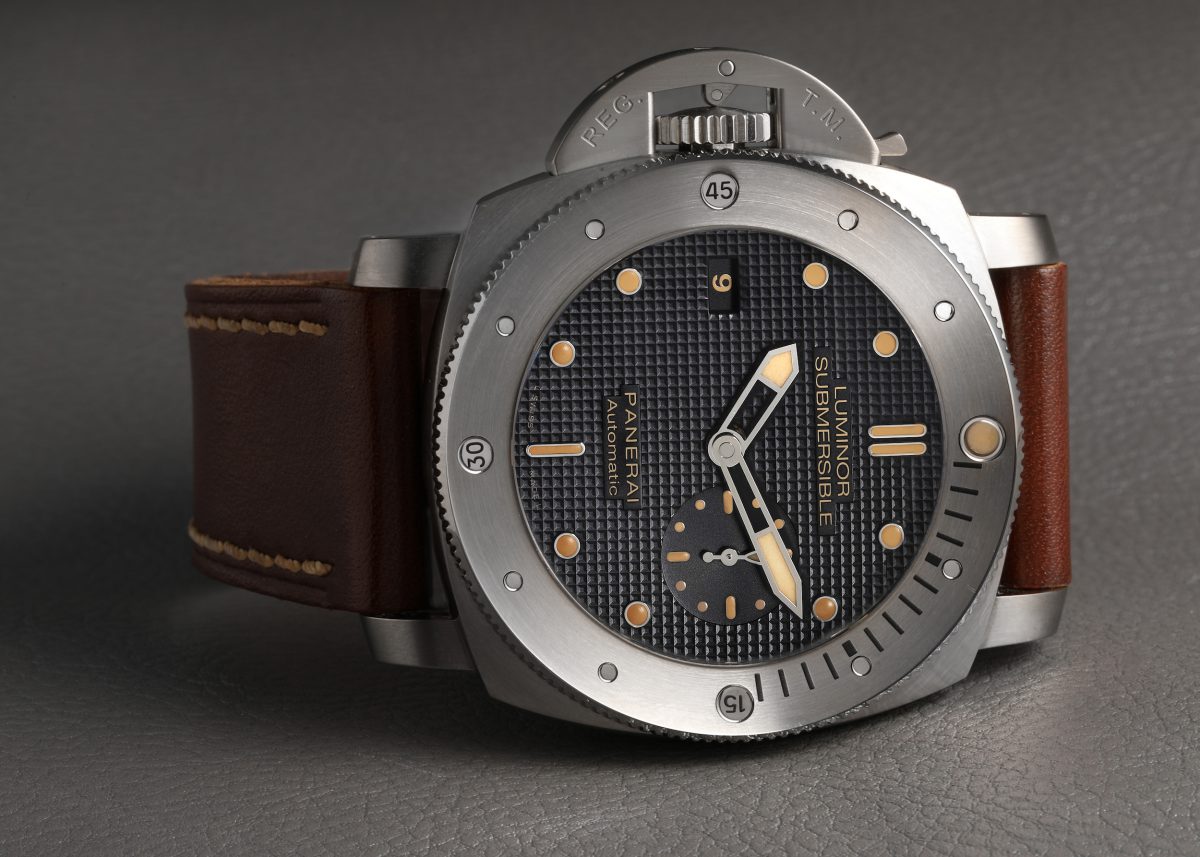
Panerai has used the waffle dial style for quite some time, and while it’s most often seen in Submersible models, it’s not exclusive to the collection – there have been Luminor and Radiomir models with waffle dials.
Panerai Proprietary Materials
Panerai watches are famous for their strong, powerful features and their robust build. Aside from the design itself, Panerai uses materials that lend their watches their signature hardiness. The company is particularly known for experimenting with raw materials not often used in the watch industry.
Below are the innovative materials used in Panerai watches:
Ceramica
While ceramic watches are commonplace in the watch industry these days, what sets Panerai apart is their use of high-tech ceramic made of zirconium oxide. This material is made from powder and is pressed in order to take the final shape of the watches. Its qualities include extreme hardness (said to be up to 5 times greater than stainless steel), scratch- and shock-resistance, as well as visual impact.
Composite
Panerai’s composite materials is made of elements previously used only in the automobile and aeronautics industries. This material is a synthetic ceramic made from aluminum and takes its final form after going through an electrochemical process called Micro Arc Oxidation. Because it creates an envelope of hard ceramic around aluminum, the material remains lightweight and yet even more resistant than ceramic or aluminum.
Carbotech
Panerai’s Carbotech is a composite material based on carbon fibre. To make this material, thin sheets of carbon fibre are compressed together with high-end polymer and Polyether Ether Ketone which binds the material. The end result is a striated appearance which varies depending on how the material is cut – therefore, no two Carbotech watches are alike.
BMG-Tech
The BMG-Tech™ is made of bulk metallic glass (hence the name), a substance formulated to have the look and feel of stainless steel, but in a more lightweight and scratch-resistant form. The material is basically a glass-like alloy that forms an atomic structure through a high-pressure, high-temperature injection process. Elements used in the alloy include zirconium, copper, aluminum, titanium and nickel.
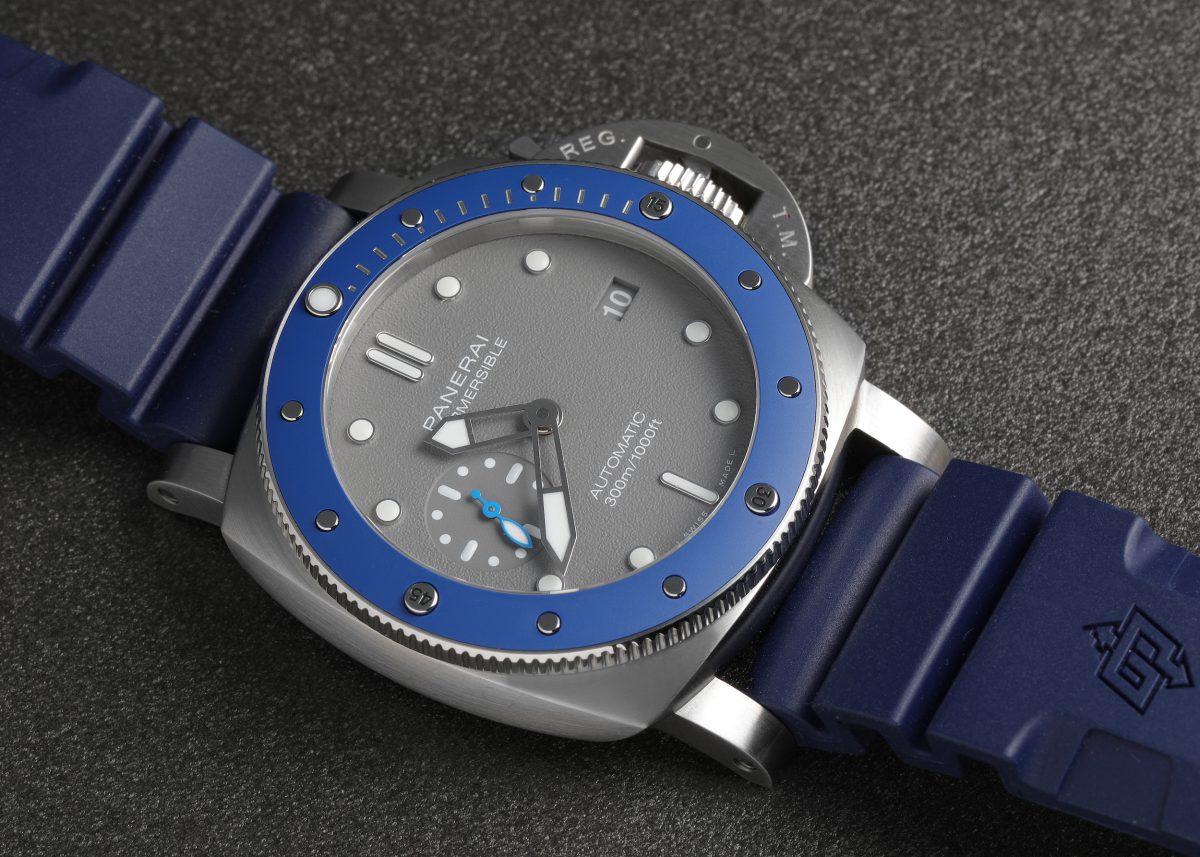
Panerai Submersible in BMG-Tech
Goldtech
Panerai’s Goldtech™ can be considered its signature red or rose gold alloy, much like Rolex’s Everose and Omega’s Sedna Gold. The material gives off a rich and intense red hue compared to standard rose gold, and this is achieved by combining yellow gold with a higher percentage of copper. This material also contains platinum which protects the watch from oxidizing, hence preserving its color for longer.
Panerai Bracelet Systems
The company is also famous for its changeable straps which allow the wearer to personalize their timepiece and experiment with different looks. Below are the different types of bracelet systems available in Panerai’s catalog:
Wire Loop System
This patented system is used exclusively on the Radiomir collection, whose watches have thin wire lugs. There are screws on the corner of the case that must be loosened to release the lug wires and the collar that holds them together, after which you can insert your new strap.
Spring Bar System
Panerai models with this system require a pushing technique to change the straps. On the side of the lug, one must push onto the hole to remove the strap gently and insert a new one. There are small grooves within each lug that assist this process.
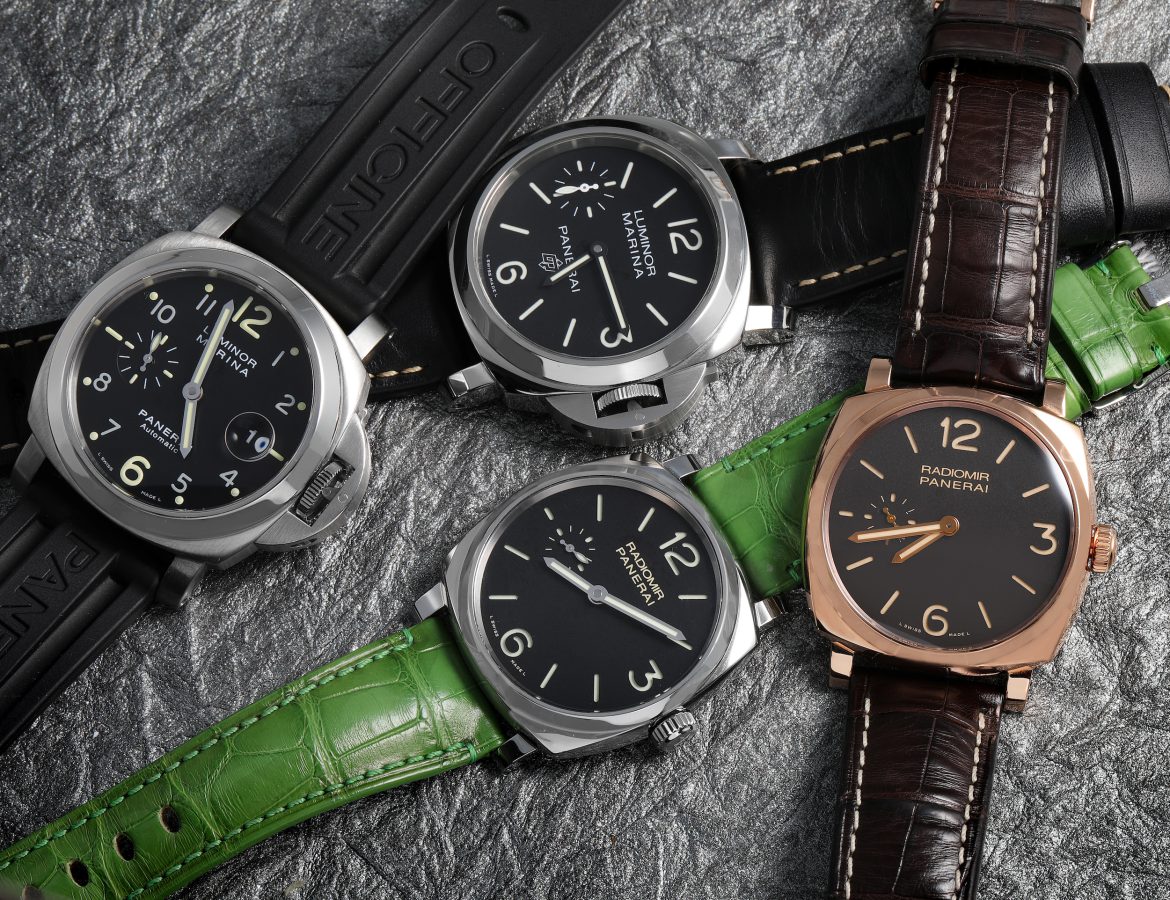
Panerai allows wearers to swap out the straps for different looks
Interchangeable Strap System
This system requires the use of a special tool provided with the watch. This requires pressing down simultaneously on the whole on the side of the lug and another on the back of the lug to release the strap. Meanwhile, there is a metal tube inserted inside the loop of the straps, which snaps onto the case, thereby attaching the bracelet.
Screw System
This method requires the use of a steel screwdriver. For watches with this system, the bracelet is screwed onto the lugs using a metal tube within the bracelet loop, which has provision for a long screw that keeps it attached to the lugs. The long screw must be inserted all the way until you hear a click before you use the screwdriver.
Quick Release System
This system does not require the use of tools. The strap can be removed from its attachment on the case with the use of pressure against the back of the strap. The new bracelet can be fitted again using the same amount of pressure. One has to ensure that the hooks are aligned before putting pressure.
Panerai Reference and Case Numbers
Panerai is famous for its PAMXXXX format of documenting its watch models. On every Panerai’s case back are a set of numbers and letters and these are not the reference numbers – rather, these are used to document details about the watch. These numbers can be interpreted as follows:
The line beginning with “OP” is the Case Number
The line beginning with “BB” is the Serial Number
There is a set of letters and numbers after the first two lines
The letter/s corresponds to the Production Year. This system began in 1998, so A = 1998 and so on. From 2024 onwards will be a combination of two letters.
The numbers here correspond to the Production Number. This is the order in which the watch is produced out of the total number of models produced for its series.
Panerai Movements
Panerai has over 20 in-house movements in automatic, manual winding, and high complication formats. The company has moved towards creating their own movements, but older models have calibers based on third party bases.
Panerai’s in-house movements have caliber numbers in the P.XXXX format; while movements built on third party bases like Unitas and ETA have caliber numbers that start with OP and end with a Roman numeral, e.g. OPXIII.
With their vast range of watches, the Panerai catalog can be overwhelming for some. Choosing a function and movement that best suits your lifestyle is one good way to narrow down your choices. For example, if you decide that you want a GMT with an automatic movement, then you can look at models with the Caliber P.4001 and P.9012. Let’s say you want a classic hand-wound movement with a long power reserve. The P.5000 movement would be ideal for you.
Panerai Watches – Final Thoughts
A huge part of Panerai’s success has been due to their design ethos of robust and reliable luxury.
While Panerai’s current collection is more diverse than ever before – offering smaller, feminine models, as well as a range of high-tech materials – all remain faithful to the original Italian designs from the early 20th century, which are instantly recognizable not just to watch enthusiasts, but even for the general public.
Whether you are looking for a capable diver or a dressier sport watch, there is a Panerai timepiece to suit your taste. Explore our collection of Panerai watches at SwissWatchExpo.com.

